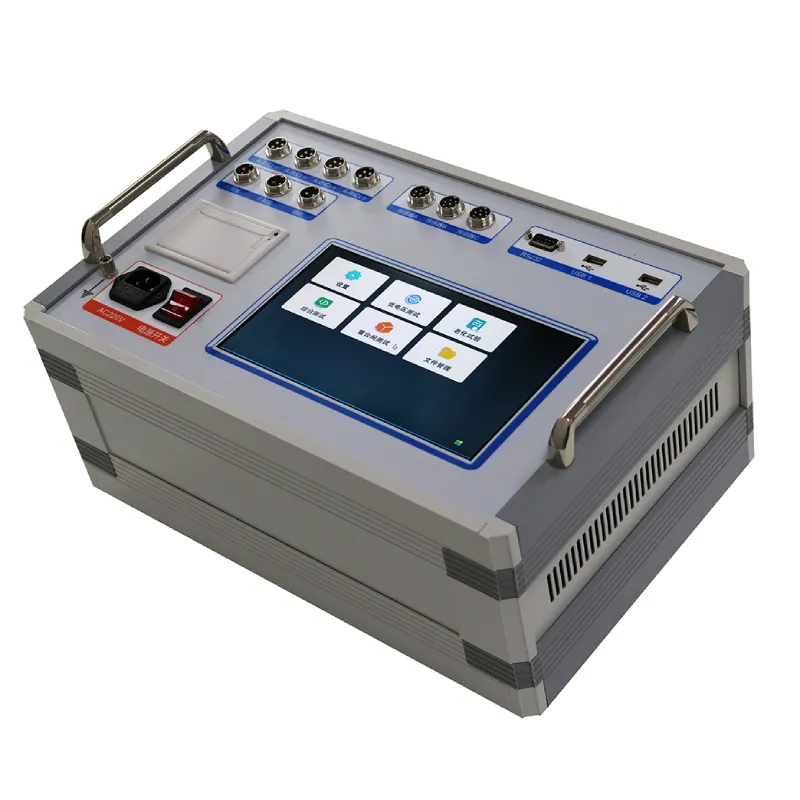 English
English


Measuring Transformer Output Using a Multimeter for Accurate Performance Assessment and Troubleshooting
Testing Output Transformer with a Multimeter
Testing an output transformer is an essential procedure that often requires careful examination to ensure the transformer is functioning correctly. An output transformer is a vital component in various audio applications, such as in guitar amplifiers, hi-fi audio systems, and other sound equipment. It translates the high-voltage, low-current signal from the power tubes into a low-voltage, high-current signal suitable for driving speakers. To confirm that the transformer is operating efficaciously, a multimeter can be employed for testing. This article provides a comprehensive guide on how to test an output transformer using a multimeter.
Safety First
Before beginning any testing, it’s crucial to prioritize safety. Power off the amplifier and unplug it from the wall outlet. Allow some time for any residual charge to dissipate, especially if the amplifier used high voltage. Familiarize yourself with the transformer’s terminals and ensure you have a suitable multimeter that can measure resistance (ohms) and AC voltage.
Visual Inspection
Start with a visual inspection of the output transformer. Look for any signs of physical damage, such as cracks, corrosion, or burnt areas. Any irregularity may indicate underlying issues. Check the connections to see if they are firmly attached and free of oxidation. If the transformer looks damaged, it may need to be replaced before proceeding further.
Resistance Testing
Next, you can perform a resistance test to check the primary and secondary windings of the transformer. Set your multimeter to the resistance (ohms) setting. Measure the resistance across the primary winding terminals. Typically, the primary winding will have a resistance ranging from a few hundred ohms to several kilo-ohms, depending on the transformer model. Note down the reading.
testing output transformer with multimeter

Now, test the secondary winding in the same manner. The secondary winding usually has a much lower resistance, often in the range of a few ohms. Compare your measurements to the specifications provided by the manufacturer or any available service manual. Significant discrepancies may indicate short circuits or open windings, suggesting the transformer is faulty.
Continuity Testing
In addition to resistance testing, continuity testing is another essential procedure. With the multimeter still set to the resistance setting, you can check for continuity between the terminals of both the primary and secondary windings. A lack of continuity (infinite resistance) in either winding signals a break in the wire, requiring a replacement of the transformer.
Voltage Testing
After confirming that the transformer windings are intact, you can conduct a voltage test, which verifies that the transformer is working during operation. Reconnect the amplifier and set it up as you normally would (ensuring safety precautions are still adhered to). Use the multimeter in the AC voltage setting to measure the voltage output on the secondary terminals while the amplifier is powered on and producing sound. Compare the measured voltage with the output rating specified for the transformer. A significantly lower or irregular voltage would indicate a problem with the transformer or the surrounding circuitry.
Conclusion
Testing an output transformer with a multimeter is a straightforward yet crucial procedure for any audio technician or DIY enthusiast. By assessing the resistance, checking continuity, and measuring AC voltages, you can effectively diagnose the transformer's functionality. Regular maintenance and testing of audio equipment help ensure optimal performance and longevity. If, after all tests, the transformer does not meet the necessary specifications, it may be time to consider a replacement to restore the system’s sound quality.
-
Differences between open cup flash point tester and closed cup flash point testerNewsOct.31,2024
-
The Reliable Load Tap ChangerNewsOct.23,2024
-
The Essential Guide to Hipot TestersNewsOct.23,2024
-
The Digital Insulation TesterNewsOct.23,2024
-
The Best Earth Loop Impedance Tester for SaleNewsOct.23,2024
-
Tan Delta Tester--The Essential Tool for Electrical Insulation TestingNewsOct.23,2024





